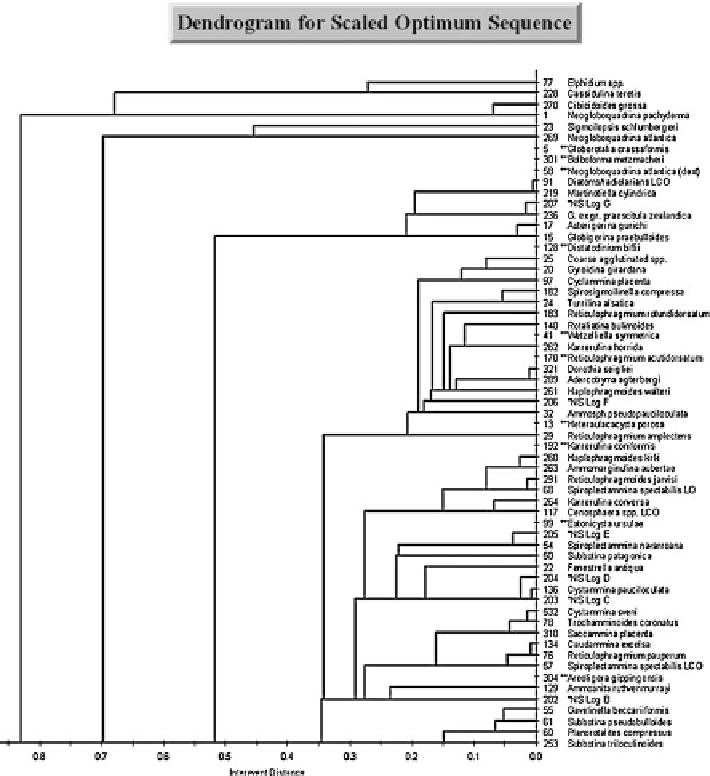Geoscience Reference
In-Depth Information
Fig. 9.18 Example of a RASC scaling output obtained for dataset (A) with MNS
6. Events with
double stars
are unique events occurring in fewer than six wells.
Single star events
are marker events,
which are not subject to significant biostratigraphic uncertainty and are weighted more strongly than
other events in the scaling algorithm. The order of events is approximately equal to that in the ranked
optimum sequence partially listed in Table
9.13
. In this diagram, as well as other diagrams in this
chapter, the axis of relative geologic time points upwards (Source: Agterberg et al.
2013
,Fig.5)
¼
relative depth instead of observed depth can have the advantage of reducing effects
of differences in sedimentation rates between wells. However, real depths are to be
used for correlation between wells. The relation between relative and true depth is
determined separately for each well. In RASCW Version 20, interpolation spline
functions are used for this purpose. For our example this changes the pattern of
Fig.
9.21
into that of Fig.
9.22
. Every event considered has a “probable” depth in the
well on the curve in Fig.
9.22
. Probable locations of events in different wells can be
connected by lines of correlation in CASC. In Agterberg (
1990
) other methods
are discussed for obtaining the PPL curves to be used in CASC.

Search WWH ::

Custom Search